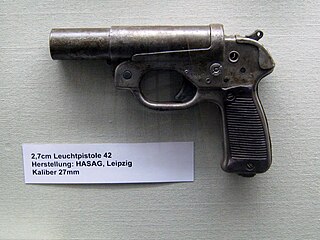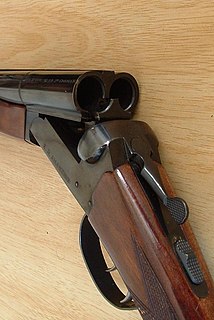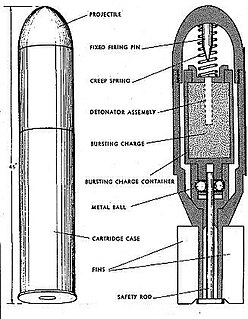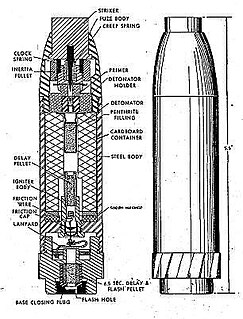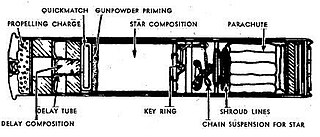| Wurfkorper 361 | |
|---|---|
 A schematic of components. | |
| Type | Rifle grenade |
| Place of origin | |
| Service history | |
| Used by | Wehrmacht |
| Wars | World War II [1] |
| Specifications | |
| Mass | 230 g (8.1 oz) |
| Length | 180 mm (6.9 in) |
| Diameter | Stem: 26 mm (1 in) Grenade: 60 mm (2.4 in) [1] |
| Maximum firing range | 78 m (85 yd) at 45° |
| Warhead | Amatol |
| Warhead weight | 110 g (4 oz) |
Detonation mechanism | 4.5 second time fuze [1] |
The Wurfkorper 361 was a grenade that was developed by Germany and used by the Wehrmacht during World War II. The Wurfkorper 361 was designed to be fired from a Leuchtpistole or flare gun in English.
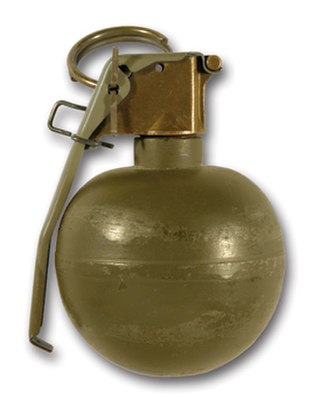
A grenade is a small explosive weapon typically thrown by hand, but can also refer to projectiles shot out of grenade launchers. Generally, a grenade consists of an explosive charge, a detonating mechanism, and firing pin inside the grenade to trigger the detonating mechanism. Once the soldier throws the grenade, the safety lever releases, the striker throws the safety lever away from the grenade body as it rotates to detonate the primer. The primer explodes and ignites the fuze. The fuze burns down to the detonator, which explodes the main charge.

Nazi Germany is the common English name for Germany between 1933 and 1945, when Adolf Hitler and his Nazi Party (NSDAP) controlled the country through a dictatorship. Under Hitler's rule, Germany was transformed into a totalitarian state that controlled nearly all aspects of life via the Gleichschaltung legal process. The official name of the state was Deutsches Reich until 1943 and Großdeutsches Reich from 1943 to 1945. Nazi Germany is also known as the Third Reich, meaning "Third Realm" or "Third Empire", the first two being the Holy Roman Empire (800–1806) and the German Empire (1871–1918). The Nazi regime ended after the Allies defeated Germany in May 1945, ending World War II in Europe.

The Wehrmacht was the unified armed forces of Nazi Germany from 1935 to 1945. It consisted of the Heer (army), the Kriegsmarine (navy) and the Luftwaffe. The designation "Wehrmacht" replaced the previously used term Reichswehr, and was the manifestation of the Nazi regime's efforts to rearm Germany to a greater extent than the Treaty of Versailles permitted.

